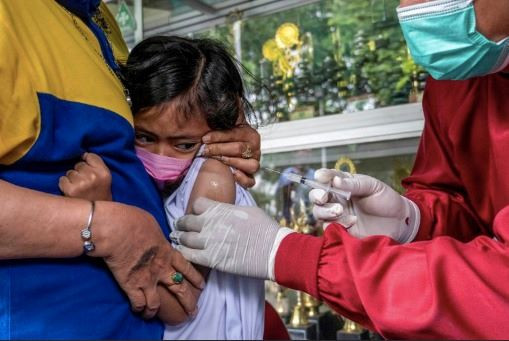Of the cyanide trial and stigma against mental disorders
Change Size
 Visitors pack the courtroom at the Central Jakarta District Court before a hearing in the murder trial against Jessica Kumala Wongso on Sept. 5 in a case focused on a cyanide-laced coffee. (JP/Seto Wardhana)
Visitors pack the courtroom at the Central Jakarta District Court before a hearing in the murder trial against Jessica Kumala Wongso on Sept. 5 in a case focused on a cyanide-laced coffee. (JP/Seto Wardhana)
T
he trial of Jessica Kumala Wongso, who allegedly murdered her friend by pouring cyanide into her coffee, has arguably turned into an exhausting media circus. Each court session is broadcasted nationwide, every word and every gesture scrutinized to the point of irritation — even as some basic facts have not been established yet.
One early source of intense media speculation and subsequently ensuing public obsession is Jessica’s mental health. After all, mentally-healthy people do not poison their friends — or do they?
The involvement of forensic psychiatrists and psychologists in the legal process is nothing out of the
ordinary.
However, media coverage exploits the simple fact that Jessica underwent psychiatric evaluation to fuel a long-standing narrative that people with mental disorders are extremely violent compared to those without.
Consequently, this world is painted as a dangerous one because “unhinged” criminals live freely among us. This narrative is not only misleading, but also damaging to people with mental health issues and to society in general.
First of all, the narrative downplays the vast range of mental disorders that impacts human behavior in very different ways. Formulating a diagnosis of mental disorders, like any other medical diagnosis, requires careful clinical interview and observation with sufficient time.
Yet, different news outlets gave Jessica wildly different diagnoses willy-nilly, mostly based on nothing more than a few minutes of video recordings. Irresponsible media attached any fancy-sounding psychiatric diagnosis they could find to Jessica just to keep the flames of sensationalism burning.
The scary idea of people with mental disorders are much more likely to commit violent acts is not based on sound evidence. The overwhelming majority of violence is done by people without mental disorders, and the absolute risk of violence by those with mental disorders is very low. Surveys found that members of the general public exaggerate the link between mental disorders and violence; they also overestimate their own risk of being a victim of violence committed by people with mental disorders.
To claim that mental disorder turns a person violent is a gross simplification of the complex web of factors surrounding violence. Numerous studies show multiple factors contributing to the risk of violence in mental disorders: age, sex, substance abuse, socioeconomic status, social stress and adverse personal history such as being abused as a child or witnessing parents fighting. Unsurprisingly, these are the same factors that increase violence risk in the general population. Living with mental disorder is not the sole predictor of committing violence.
This irresponsible and inaccurate media portrayal of mental health issues is harmful in many ways.
Stigma is a major barrier to accessing psychiatric treatment. People who feel that they need psychiatric help may defer seeking treatment because they feel that the risk of isolation and discrimination is too great to bear.
The resulting treatment gap is saddening because we know that the currently available range of treatments for mental disorders, both pharmacological and non-pharmacological, generally work well to control symptoms and improve quality of life, and that the sooner treatment is initiated the greater the chance that we will see positive outcome. Sadly, the best therapy in the world will not work if those who need it cannot access it.
Stigma inevitably leads to discrimination. Members of society avoid living, working, and socializing with people living with mental disorders, essentially depriving them of basic human rights. Many fear that getting psychiatric help will cost them their relationships, jobs, and all other parts that make up their lives. Such intense discrimination then engenders feelings of isolation and hopelessness, putting even more burden on those fighting against their mental disorder.
In fact, people with mental disorder are far more likely to be victims of violence and other forms of abuse.
Further down the line, the treatment gap and discrimination negatively impacts the welfare of society through higher healthcare costs, lost productivity and reduced quality of life.
The prevailing negative media portrayal of mental health and mental disorder actively contributes to the stigma attached to such illnesses and those who live with it, especially when we consider the immense influence mass media wields in shaping public perception. More people obtain information on mental health through print and electronic media than from mental health professionals.
Stakeholders have been working hard to fight the stigma against mental disorder because of the wide-ranging damage it poses to individuals and society. The media should be a partner in that fight, rather than exploiting baseless, harmful stigma for the sake of ratings and short-term profits.
_____________________________
The writer is a doctor living in Jakarta.








